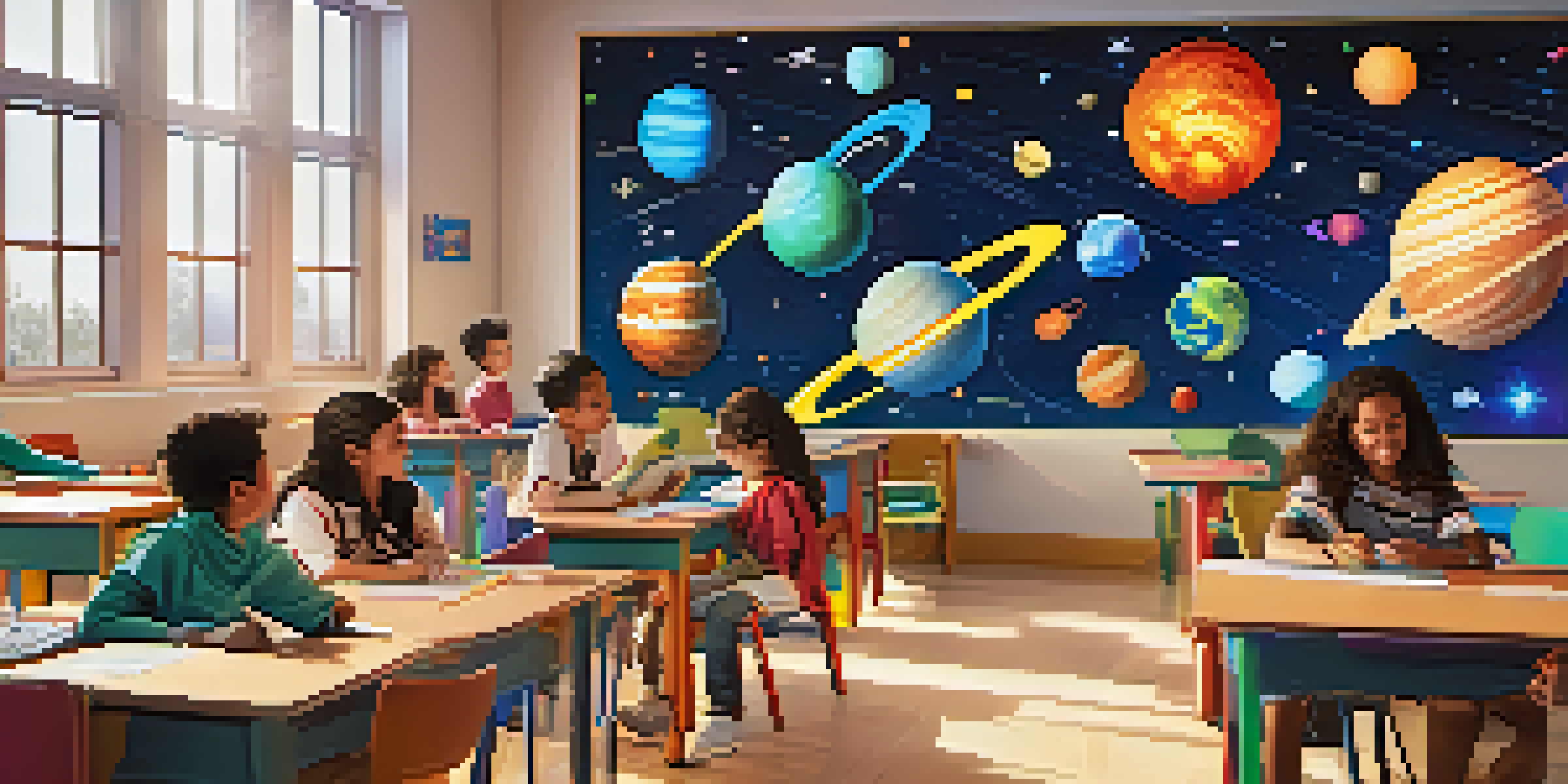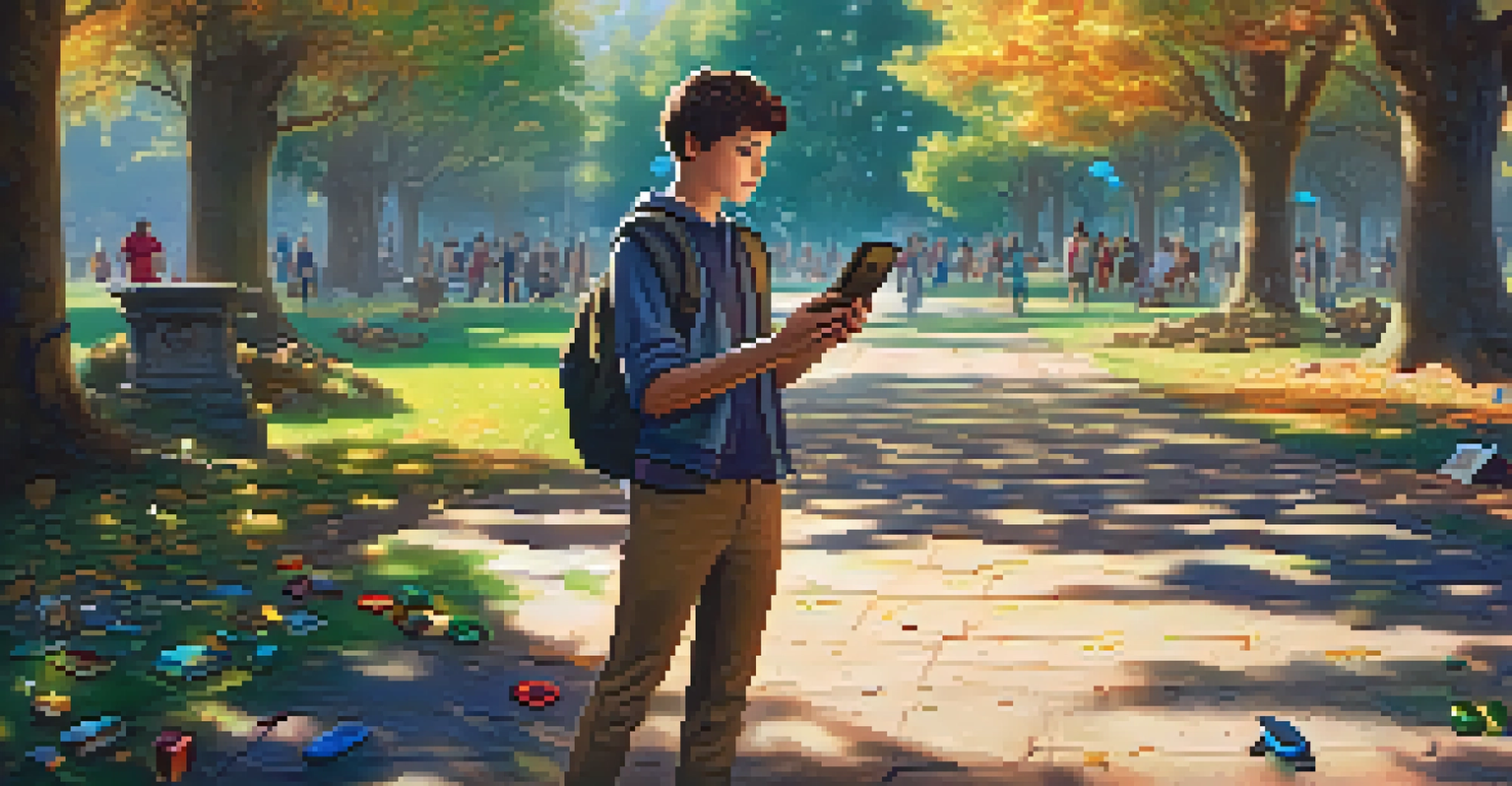The Integration of Augmented Reality in Gamified Learning

What is Gamified Learning and Why Does It Matter?
Gamified learning transforms traditional education by incorporating game-like elements, such as points, badges, and challenges, to motivate learners. This approach makes learning more engaging and enjoyable, tapping into our natural love for games. By fostering a competitive yet fun environment, gamified learning encourages students to participate actively and invest in their educational journey.
Gamification works because it taps into our natural desires for competition, achievement, and social connection.
For instance, think of a classroom where students earn badges for completing tasks, similar to leveling up in a video game. This system not only rewards effort but also creates a sense of achievement and belonging among peers. The excitement of competition can push learners to explore subjects more deeply and persist through challenges.
Ultimately, gamified learning can lead to better retention of information, as the interactive elements make lessons memorable. In a world where attention spans are dwindling, this approach could be the key to keeping students engaged and motivated.
Understanding Augmented Reality (AR) in Education
Augmented Reality (AR) enhances the real world by overlaying digital information, providing an interactive experience that can be particularly effective in education. Imagine pointing your smartphone at a textbook and watching a 3D model of the solar system come to life right in front of you! This blend of physical and digital worlds allows learners to visualize complex concepts in a way that textbooks alone cannot achieve.

Using AR in education breaks down barriers to understanding, especially in subjects like science or history, where visualizing data can be challenging. By making abstract ideas concrete, AR helps students grasp difficult topics more easily. For example, students studying anatomy can examine a 3D human body, rotating it and zooming in on specific organs to understand their functions better.
Gamified Learning Boosts Engagement
Incorporating game-like elements in education fosters motivation and active participation among students.
Moreover, AR can cater to different learning styles, providing visual, auditory, and kinesthetic experiences. This adaptability ensures that all students, regardless of how they learn best, can benefit from the educational material.
How AR Enhances Gamified Learning Experiences
Integrating AR into gamified learning takes engagement to a whole new level. By utilizing AR, educators can create immersive scenarios where learners interact with digital elements in real-time while competing for rewards. This not only heightens excitement but also deepens the learning experience, as students are more likely to remember content they've actively engaged with.
Augmented reality is a powerful tool for education, providing experiences that can enhance learning and engagement.
For example, consider a history lesson where students embark on a virtual treasure hunt, uncovering historical artifacts through AR. Each artifact could provide clues or quizzes that, once completed, earn them points or unlock new levels. This interactive format makes learning history not just an academic exercise but an adventure that sparks curiosity and enthusiasm.
Additionally, AR can facilitate collaboration among students. Imagine working in teams to solve challenges that require both physical and digital interaction, fostering teamwork and communication skills while making learning fun.
Real-World Applications of AR in Gamified Learning
Numerous educational institutions are already harnessing AR technology to create engaging gamified learning experiences. Apps like 'Kahoot!' and 'Quiver' blend AR with quizzes and coloring activities, turning mundane tasks into exciting challenges. These platforms not only make learning fun but also provide instant feedback, which is crucial for learner growth.
One notable example is the use of AR in medical training, where students can practice surgeries in a risk-free environment. By gamifying these simulations, learners can earn points for precision and speed, building their confidence before working with real patients. Such applications highlight the practical benefits of gamified AR learning in professional fields.
AR Enhances Learning Experiences
Augmented Reality provides interactive, visual experiences that help students better understand complex concepts.
As AR technology continues to evolve, the possibilities for gamified learning are virtually limitless. From language learning games that immerse users in virtual environments to interactive science labs that simulate experiments, educators can create rich, varied experiences that resonate with students.
Benefits of Integrating AR into Gamified Learning
The integration of AR into gamified learning offers a multitude of benefits that enhance the educational experience. Firstly, it increases engagement, as students are drawn into interactive scenarios that spark their interest. When learners see real-world applications of their studies, they are more likely to find relevance and motivation in their education.
Moreover, AR facilitates personalized learning. With gamified elements, students can progress at their own pace, choosing challenges that suit their skill levels. This tailored approach ensures that each learner receives the support they need, fostering a sense of achievement and encouraging them to take ownership of their learning journeys.
Finally, integrating AR into gamified learning environments promotes critical thinking and problem-solving skills. By presenting challenges that require creative solutions, students develop essential competencies that will serve them well beyond the classroom.
Challenges in Implementing AR in Education
While the benefits of AR in gamified learning are significant, challenges do exist. One major hurdle is the technology itself; not all educational institutions have access to the necessary devices or resources to implement AR effectively. This can create disparities in learning opportunities, particularly in underfunded schools where resources are limited.
Additionally, educators may require training to effectively integrate AR into their teaching strategies. Without proper guidance, teachers might feel overwhelmed by the technology, leading to underutilization. Ensuring that educators are comfortable with AR tools is vital for maximizing their potential in the classroom.
Future of AR in Education is Promising
As technology advances, AR is set to create innovative and inclusive learning environments for diverse learners.
Lastly, there can be a tendency to focus more on the gamification aspect and less on the educational content. Striking the right balance is crucial to ensure that while students are having fun, they are also absorbing and understanding the material presented.
The Future of AR in Gamified Learning Environments
The future of AR in gamified learning is bright, with continuous advancements in technology paving the way for more innovative educational experiences. As AR becomes more accessible, we can expect to see a surge in its application across various subjects and age groups, creating a more inclusive learning environment. Imagine a classroom where students from different backgrounds can explore the same content, tailored to their unique learning needs.
Furthermore, the potential for collaboration between educators and tech developers could lead to the creation of customized AR tools that specifically address the gaps in current educational practices. This partnership could result in innovative solutions that enhance both teaching and learning, making education more effective and engaging.

As we look ahead, it's essential to remain open to the possibilities that AR brings. By embracing this technology, we can create a new generation of learners who are not only knowledgeable but also skilled at navigating an increasingly digital world.